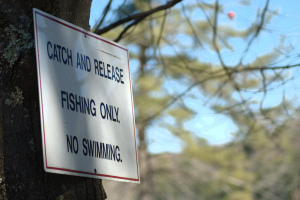 As we embark on a new year, many take the time to identify resolutions for the coming months. For fundraisers, our goals are often centered around increasing contributions, and gaining new donors. What if we also focused on keeping our established donors?
As we embark on a new year, many take the time to identify resolutions for the coming months. For fundraisers, our goals are often centered around increasing contributions, and gaining new donors. What if we also focused on keeping our established donors?
Research into donor retention across the nonprofit industry indicates that our ability to keep the friends we make might be far worse than we actually realize. All year, we scramble for new contributors, each of whom are likely giving only modestly until they get to know us. Chances are, we aren’t doing enough to keep them engaged, and they don’t hang around for long.
According to the Association of Fundraising Professionals’ Fundraising Effectiveness Project, chances are, only 43% of your new donors this year will return next year. If this trend prevails, your organization will retain in 2019 somewhere around 1.5 percent of the donors it acquires this year. 2014’s thousand donors will have dwindled to 15 people still hanging with you.
Still, each year we spend spin our wheels. We prioritize the accumulation of new donors, even with special recognition and fanfare, and all but ignore established ones.
What if we spent some of our valuable resources this year building relationships with our established donors instead of checking an imaginary box that they’ve been recruited, and then ignoring them? What if we took the time to find out why they’d given in the first place and let them have some idea what we did with their contribution?
What if, by doing so, we increased our donor retention rates by even 10 percent? Those 15 donors (out of an original 1,000) become 42 donors, whose commitment to our cause and relationship with (and perhaps annual contribution to) our organization has been strengthened. We know individuals can continue to give at ever increasing levels over the course of their lifetime and beyond if so moved, so those 42 donors over the course of the next five years might become our major donors, their ranks growing every year.
Think of ways you can build a relationship with the donors you worked so hard to acquire last year, as well as with the ones who have stuck with you from even further back.
Need ideas on how to do this? Enlist your fundraising committee and board in brainstorming inexpensive opportunities. Even if they don’t love the idea of picking up the phone at first, once they hear how grateful people are to hear a simple thank you, they’ll be the biggest proponents of your retention efforts.
Following are some activities I like to see organizations conduct:
Conduct a donor thank-you campaign – Enlist a group of volunteers to make thank you phone calls for an evening. Give them a script and a list. If you’re really energized, bring appetizers, sit around a table and make a party out of the evening. You’re not asking for anything. In fact, you’ll leave messages about 80 percent of the time. But you’ll get noticed, and your callers will have fun.
Add a personal touch to your acknowledgements – Donors notice which organizations include personalized notes on acknowledgement letters and which ones just leave a signature. How hard is it to handwrite a little something extra? Hope the kids are well. Enjoying the weather? I’d love to see you soon!
Highlight the personal stories of one or two of your supporters – if you have a donor or two willing to let you interview them for your annual report or a vignette in your newsletter, do it. Include a photo. Why did they give? What is their history with the organization? What is their story? Be brief and warm. Other donors will volunteer their stories. Others still will be inspired and feel they are part of a community.
Look for special opportunities for recognition – local news organizations and publications are always looking for nominees for community members/businesspeople/women/men/youth of the year. Each spring, our local AFP chapter solicits nominations for heroes in philanthropy. These are low cost means of not only recognizing those important to our organizations, but also finding out more about them.
Include them in your inner circle – Do you have an email or snail-mail newsletter for inner circle friends and associates? Include your established donors with a personal note saying why you thought they’d be interested.
As you’re firming up your resolutions for the New Year, take some time to include donor retention efforts in your plans. In both the short and long term, you’ll be happy you did so.
***
Leave a comment: What are some of your favorite low cost/high impact donor retention strategies?
Photo by: Michael Corbett
